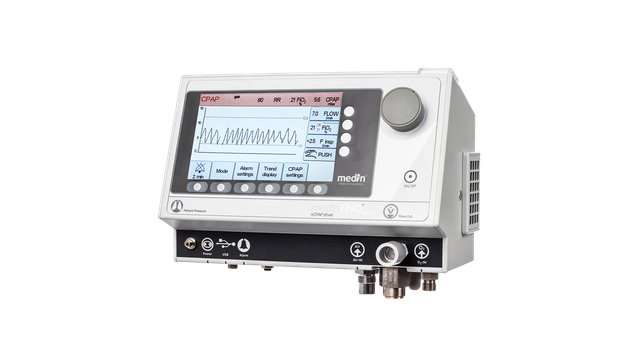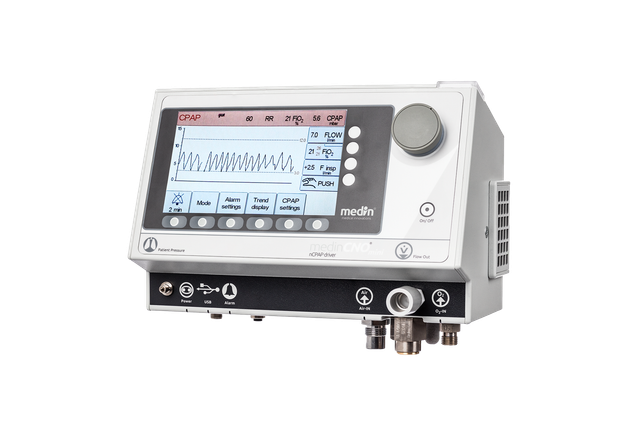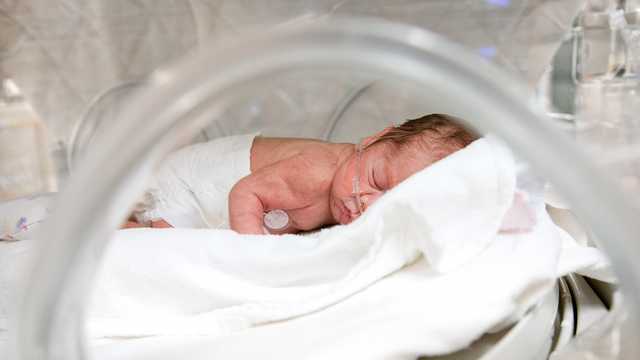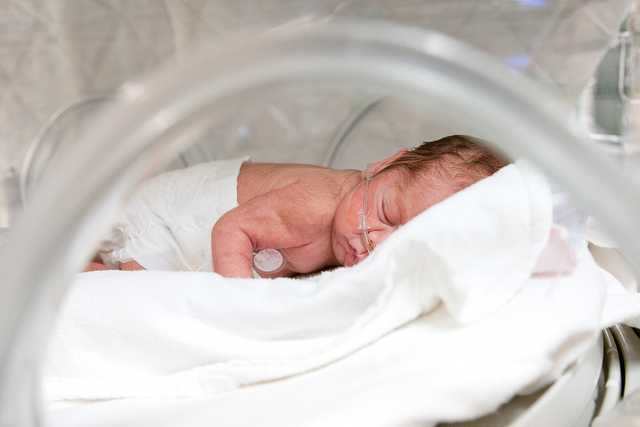

The nCPAP modes are designed so you only need to set the desired CPAP pressure. The flow is subsequently adjusted based on patient conditions and potential leaks. This prevents unintended peak pressures, guarantees highly efficient leak compensation, and helps to reduce oxygen consumption. Flow adjustment occurs very rapidly due to the high sensitivity of the pressure measurement.
Apnea is detected by MediTRIG. As a result, breaths are automatically triggered to stimulate breathing. Frequency, pressure level and breath duration can be individually adjusted.
In addition to the PEEP, breaths with fixed settings (pressure level, duration, frequency) are administered. These breaths have a higher pressure level and are not emitted in a synchronized manner.
nHFT describes the supply of heated and humidified breathing gas via a nasal cannula. The gas flow administered is thus higher than the patient’s inspiratory respiratory flow. In neonatology, a flow of more than 1 LPM is considered to be high-flow therapy, while for adults, correspondingly higher values should be applied.
The MediTRIG respiratory trigger was specially developed by medin for use in premature infants and newborns. Through the combination of the pressure measurement in the Medijet® generator and the signal processing in the medin nCPAP devices, MediTRIG works without additional sensors.
MediTRIG detects central as well as obstructive apnea.

